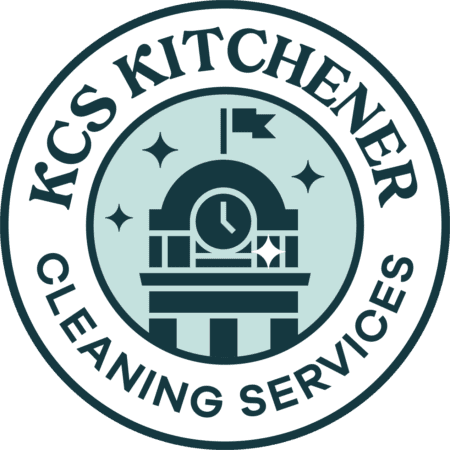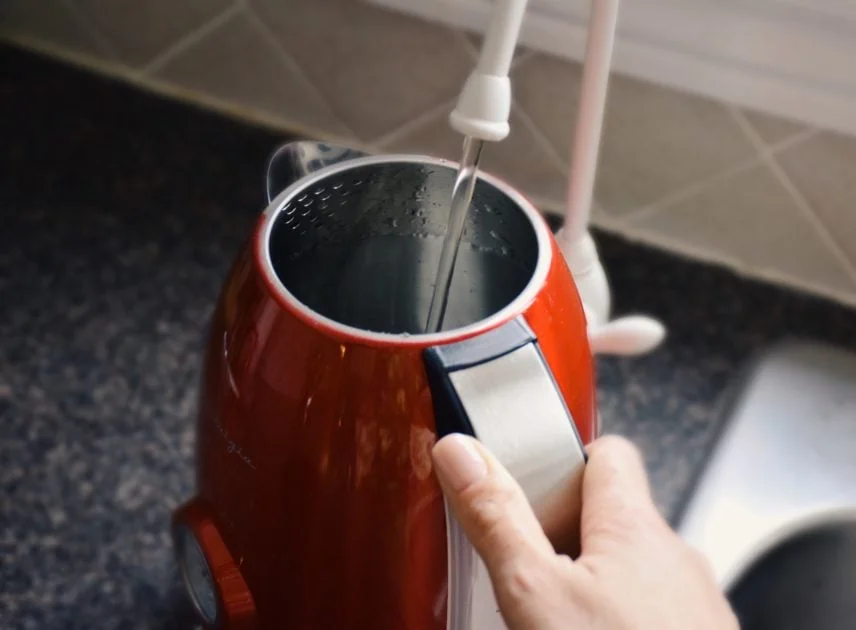Limescale buildup in kettles can significantly affect the taste of your hot beverages and reduce the longevity of your appliances.
A seemingly mundane problem, limescale is a stubborn, crusty deposit you must have noticed at the bottom or on the sides of your kettle. It’s a deposit of minerals, like calcium and magnesium, left behind as the water evaporates during the boiling process. They not only leave behind a metallic aftertaste but can also hamper the functioning of your kettle over time.
In this article, we will guide you through some simple, safe, and effective methods you can use to remove limescale from a kettle.
Safe and Effective Methods for Removing Limescale
Before you consider replacing your kettle due to limescale buildup, try using some safe and effective methods for removal.
In our experience, the upcoming descaling techniques that use common household items, like vinegar, baking soda, and lemon juice, are very effective.
Descaling with Vinegar and Water Mixture
If you’re looking for a simple yet efficient way to descale your kettle, a vinegar and water mixture could be your answer.
Here are the steps to do this:
- Make a solution of equal parts vinegar and water; the quantity should be enough to fill the kettle.
- Bring this solution to boiling in the kettle.
- Once boiled, unplug your kettle and let it sit with the solution overnight. This allows the acetic acid in the vinegar ample time to break down the limescale.
- The next morning, pour out the solution from the kettle. It’s essential to rinse the kettle thoroughly with clean water after this process to eliminate any residual vinegar taste.
Remember, the efficacy of this method lies in the soaking period. The longer you let the kettle sit with the vinegar solution, the more effective the descaling process will be at removing the limescale
Descaling with Baking Soda
Baking soda is yet another magical household product that can come to your aid when looking to remove limescale from a kettle.
Here’s how you can put it to use:
- Fill your kettle with water and add about a teaspoon of baking soda.
- Bring the water and baking soda solution to a boil inside the kettle.
- After boiling, turn off the kettle and let the solution sit for about 20 minutes. This waiting period allows the baking soda to work on the limescale.
- Once cooled, if you notice any stubborn areas, scrub them gently with an old toothbrush.
- Rinely clean the kettle thoroughly using water to ensure there’s no residual baking soda left.
It should be noted that besides being a potent cleaning agent, baking soda also helps in neutralizing any unpleasant odors that might be lingering in your kettle.
Descaling with Lemon Juice or Citric Acid
For those who prefer natural alternatives, lemon juice or citric acid can be an excellent choice for descaling your kettle. Both are efficient at breaking down limescale deposits, and they leave your kettle smelling fresh.
Here’s how to do it:
- Fill the kettle with water and add the juice of one lemon or a teaspoon of citric acid.
- Bring this solution to a boil, then turn off the kettle.
- Leave the boiled mixture in the kettle for 1 to 2 hours. This soaking allows the acidic properties of the lemon juice or citric acid to act on the limescale.
- After soaking, scrub any stubborn spots with a soft brush or cloth.
- Lastly, make sure to rinse the kettle thoroughly with water to remove any leftover citric residue.
While these natural methods may take a little longer compared to vinegar or baking soda, they are equally effective and add a pleasant, refreshing citrus aroma to your kettle.
Video Walkthrough
Additional Tips for Deeper Cleaning
Now that we’ve covered some of our favorite methods for descaling your kettle using household items, it’s worth covering additional tips that can help you get a deeper clean.
Below, we explain how to deal with persistent or stubborn limescale, or methods for achieving a greater level of cleanliness.
Using Commercial Descaling Solutions
While home remedies can be effective, there are also commercial descaling solutions available in the market that are specifically designed to combat limescale buildup. These can be especially helpful for stubborn deposits or for those who prefer a quick and easy solution.
Remember, while these commercial solutions can be highly effective, it’s crucial to follow the instructions carefully to get the best results and to avoid damaging your kettle
Using Vinegar and Baking Soda Combination
For those stubborn limescale deposits that refuse to budge, a combined solution of vinegar and baking soda can be a powerful descaling option. The bubbling reaction produced by mixing these two substances has a potent effect on limescale.
Here’s how to do it:
- Fill your kettle halfway with equal parts of water and vinegar and bring it to a boil.
- After boiling, add a teaspoon of baking soda. Be cautious as the mixture will fizz.
- Let this solution sit inside the kettle for about 20 minutes to an hour depending on the scale buildup.
- Use an old toothbrush or scrubbing tool to tackle any remaining stubborn areas.
- Finally, rinse the kettle multiple times with water to make sure no residue remains.
When using this method, always be careful with the fizzing reaction to avoid any spills. In our point of view, this combination may require a little more effort, but the outcome definitely justifies it.
Preventing Limescale Buildup in Kettles
While it’s essential to know how to descale your kettle, prevention is always better than cure. So, in the next few sections, we’ll delve into some preventive measures that can be taken to minimize limescale formation in your kettle.
Using Filtered Water or Distilled Water
The type of water you use can directly impact the level of limescale formation in your kettle. Hard water, which is high in mineral content, often leads to a more rapid buildup of limescale.
Here’s how you can mitigate this:
- Opt for using filtered water or distilled water in your kettle. These forms of water have fewer minerals, specifically calcium and magnesium, which contribute to limescale buildup.
- Consider investing in a water filter if you use tap water. This can significantly reduce the mineral content in the water before it goes into your kettle.
- Alternatively, you can buy distilled water for the exclusive purpose of using it in your kettle.
Switching to filtered or distilled water can significantly decrease the rate of limescale buildup, making your kettle last longer and operate more efficiently.
Regular Cleaning and Maintenance
Regular cleaning and maintenance of your kettle are fundamental to preventing limescale buildup and ensuring the longevity of the appliance.
Below are some useful tips on how to maintain your kettle:
- Make it a habit to rinse and dry your kettle after each use. This simple step can help prevent mineral deposits from settling in the kettle.
- Depending on the hardness of your water, schedule a regular deep clean with one of the descaling methods we discussed above. This could be weekly, bi-weekly, or monthly.
- Consider using a kettle-cleaning product or descaling solution periodically for a more extensive cleanup. These are specifically formulated to manage limescale and can be very effective when used as part of a regular maintenance schedule.
- Some kettles have a scale filter which should be cleaned regularly. If it’s removable, soak it in a descaling solution to keep it working efficiently.
Implementing these maintenance steps into your routine can go a long way in keeping your kettle free from limescale, ensuring its optimum performance, and preserving its lifespan.
Conclusion
By leveraging household staples such as vinegar, baking soda, and lemon juice, you can effectively descale your appliance and keep it running optimally. Commercial descaling solutions and a combination of vinegar and baking soda serve as alternatives, or solutions for tough limescale buildup.
Opting for filtered or distilled water can also be a significant step in reducing limescale formation. But remember, regular cleaning and maintenance are the best practices for preventing limescale buildup.
By implementing these strategies, you can not only prolong your kettle’s lifespan but also ensure that every cup of tea or coffee you make tastes its best. Clean kettle, better brews!


